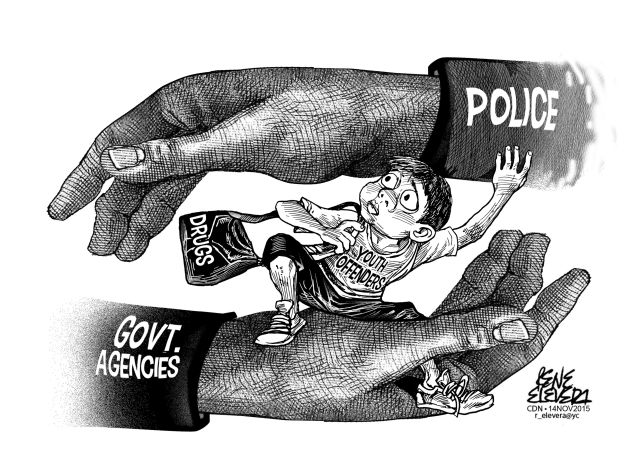
The police rescue of two minors from a suspected big-time drugpusher at his home in Catmon town, north Cebu last Saturday came days after former senator Francis Pangilinan answered critics of his Juvenile Justice Law.
The law had been under fire from police and lawmakers who said it goes soft on youth offenders who not only commit heinous crimes like murder, rape and kidnapping but were also used as pawns in adult crime rings, including drug running.
A teenage boy said he was hired as a househelp in Catmon, with a promise by his employer to send him to school.
He wasn’t aware till three weeks ago, that his job description was something else. He was tasked to hand over drugs to customers at the house gate, who would buy P200 for a packet of white crystals.
His employer Zaldy Bravo, an ex-convict, was dealing in shabu. Police gunned him down and took into custody, a woman renting the house, a 19-year-old woman and her boyfriend Anthony Grape, Bravo’s right-hand man.
The minor had little choice in the arrangement.
His 17-year-old cousin was in the household as the family’s nanny. They both realized they were trapped, too scared to tell their parents.
If they hd continued living there, who knows what else their roles would have evolved to, and what habits they would acquire.
Their turnover to social workers is only the start of a long process of recovery. Yet critics of the Juvenile Justice Law which seeks to protect underaged offenders from being detained with hardened adult lawbreakers would have people believe that they are just as guilty of the crime and deserve harsher punishment.
As reiterated by Pangilinan, amendments been made to the law to ground it in the reality of today’s world.
Children are used in the commission of crimes, even if they don’t know better or are forced into the role as a matter of survival.
These amendments include requiring youth offenders aged 12 to 15 years old who committed heinous crimes to undergo intensive rehabilitation for a year and be evaluated by a court who will then determine if he or she is ready to join society anew.
It is, to put it simply, a matter of tough yet judicious law enforcement aimed not only at curbing crime but to give offenders both young and old, a chance to redeem themselves.